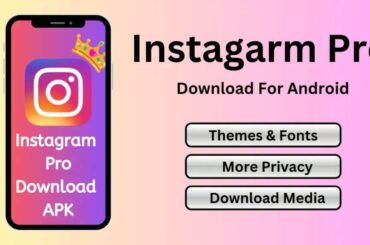Developing mobile apps that are usable by users of different abilities is not just a best practice, but also a basic necessity in the rapidly changing field of app development. With the growing demand for inclusive technology, developers are choosing to create apps that meet a variety of user demands using the popular cross-platform framework React Native.
In this blog the best-in-the-industry experts offering React Native development services have discussed the best practices for ensuring accessibility in React Native apps. with a focus on how important it is to provide an inclusive user experience. In addition to being in line with ethical principles, the process of creating accessible apps creates chances for a larger user base.
Understanding Accessibility in React Native
React Native accessibility is the process of designing and creating applications that are usable by everyone, including people with disabilities. Ensuring proper navigation, perception, and interaction with your software is crucial for users with different abilities. Developers need to think about every facet of app development, from UI design to code implementation, to do this.
Semantic HTML Elements
Use semantic HTML elements to provide meaningful structure to your React Native components. Properly structured elements assist screen readers in interpreting and conveying information to users with visual impairments. Utilize elements like <button>, <input>, and <img> appropriately.
Descriptive Texts and Alt Attributes
Ensure that all images have descriptive text using the ‘alt’ attribute. This not only benefits users with visual impairments but also improves overall SEO. Provide concise and meaningful descriptions that convey the purpose or content of the image.
Readable Text
Maintain a readable font size and contrast ratio to accommodate users with low vision or colour blindness. React Native allows you to set text styles and colours easily. Ensure that text is resizable without loss of functionality.
Keyboard Accessibility
Make your React Native application fully keyboard-operable by adding keyboard accessibility. By providing suitable attention management, you can allow users to browse between interactive things using the tab key on their keyboard. Verify that all interactive elements can be accessed and used with keyboard instructions.
Accessible Forms
Make forms easier to navigate by naming form elements correctly and offering clear instructions. Employ the <label> element and use the ‘for’ attribute to link it to form controls. ARIA (Accessible Rich Internet Applications) roles can be used to communicate the elements’ state and function.
Testing With Accessibility Tools
Use Axe, Accessibility Insights, or the built-in accessibility features of iOS and Android to routinely test your React Native app for accessibility. These resources support the detection and resolution of possible accessibility-related problems.
Screen Reader Compatibility
Make sure that your React Native application is compatible with screen readers. Try your app with widely used screen readers such as NVDA (Windows), TalkBack (Android), and VoiceOver (iOS). Make the proper announcements, and make sure your software is easy for consumers to utilize.
Dynamic Content Accessibility
By alerting screen readers to updates, you may make dynamic content accessible. To make sure that users receive timely and pertinent information, programmatically notify screen readers about updates using accessibility APIs.
Provide Alternative Navigation Options
Give users who might have trouble using conventional touch gestures other navigational choices. Use capabilities like gesture-based navigation or voice commands to make the experience more adaptable and inclusive.
Consideration for Color Contrast
When creating your app, take colour contrast into account. Make sure that the text and background colours have enough contrast for users with vision problems to easily read the material. This improves readability in a range of lighting conditions and helps those who are colour blind.
Conclusion
In conclusion, giving accessibility priority while developing React Native apps complies with ethical standards and expands your app’s user base. By implementing these best practices you help to make the internet a more welcoming place for everyone. Maintaining your commitment to accessibility as the development landscape changes will make sure that your React Native apps continue to be user-friendly for all users, regardless of ability.
Recall that the objective is to design an app that is pleasant and usable for people of all abilities, not only to satisfy the bare minimum of accessibility criteria. Through the integration of these recommended practices into your React Native development services, you can make the online world more approachable and intuitive for users.






